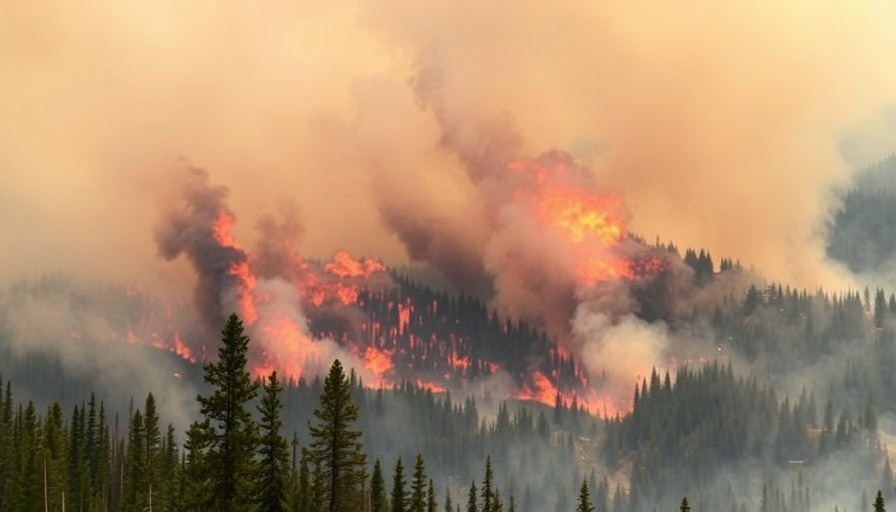
Understanding the Impact of Record-Breaking Canadian Wildfires
As the summer of 2025 unfolds, Canada is grappling with historic wildfires that pose a serious threat not only to its own citizens but also to air quality across significant portions of the United States. Particularly fierce blazes in Manitoba, Saskatchewan, and Alberta have hastened evacuations, highlighted by aerial footage revealing homes swallowed by flames.
Why These Fires Are Different: A Warning of Climate Change
The recent Canadian wildfires are a stark reminder of the escalating climate crisis. The prairie provinces have seen a staggering increase in fire activity, with Manitoba experiencing wildfires that have already consumed around 200,000 hectares - a figure that is roughly three times the annual average for the province. This dramatic uptick in wildfires can be traced back to warmer, drier conditions fueled by climate change.
As Manitoba's premier, Wab Kinew, pointed out, this widespread phenomenon signifies a shift in how we must perceive and respond to such environmental challenges: "This is the largest evacuation Manitoba will have seen in most people's living memory... That is a sign of a changing climate that we are going to have to adapt to." This context is crucial for understanding why these events are becoming increasingly common and severe.
Evacuation Efforts Highlighting Communities in Crisis
Across the impacted regions, more than 17,000 individuals are currently being airlifted from wildfire zones thanks to the swift intervention of the Canadian military. Alarmingly, some communities in Saskatchewan are not only under threat but also facing severe disruption due to road closures, which trap residents in perilous conditions. For families and individuals in these circumstances, the immediate concern is safety. However, the long-term impacts on housing availability and investment in these regions are significant, particularly for homebuyers and investors seeking to enter the Dumfries market.
How Widespread Smoke Poses Risks Beyond Canada
The smoke generated from these wildfires is expected to traverse the U.S. border, prompting air quality alerts as far south as Minnesota. Initial forecasts are concerning, with major cities like Chicago and Detroit forecasted to experience deteriorating air quality due to the smoke plume. This presents a dual challenge: not only are individuals in Canada suffering from the flames, but a significant portion of the population in the northeastern United States will also face health risks associated with poor air quality.
Protecting Your Home Investment during Fire Season
For homebuyers and investors in regions vulnerable to fires, awareness is key. Understanding seasonal risks and staying updated on local evacuation protocols can help you in mitigating risks associated with wildfires. It's not just a matter of physical safety but also ensuring that property values are protected, especially amidst growing concerns about climate-related disasters.
Actionable Steps for Homeowners and Investors
In light of the increasing frequency and severity of wildfires, prospective buyers and sellers should consider adapting their strategies to incorporate sustainability and resilience. Here are practical measures to protect your investment:
- Invest in Fire-Resistant Materials: Options like stucco or brick siding can prove beneficial.
- Maintain Landscaping: Use fire-resistant plants and design to create defensible spaces around homes.
- Stay Informed: Subscribe to alerts concerning weather and fire threats to keep abreast of potential risks.
Conclusion: A Call to Action for Sustainable Home Design
The current crisis serves as an urgent reminder of the need for action in combating climate change and supporting home communities. As we face increasingly volatile weather patterns, looking towards sustainable home solutions is essential. For those interested in shaping their living spaces into sustainable environments, consider practices that promote eco-friendliness while maintaining aesthetic appeal. Your choices can contribute to a more resilient community.
Are you ready to embrace sustainable home design in your next property endeavor? Reach out to local experts for guidance and tailored strategies for success in the Dumfries market.
 Add Row
Add Row  Add
Add 





Write A Comment